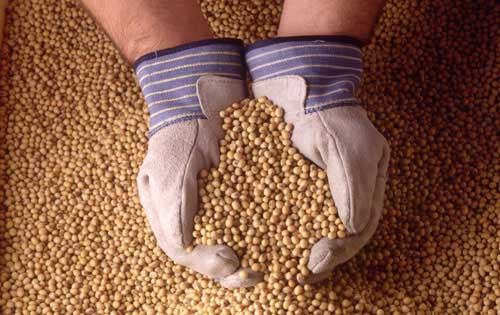Breeding soybeans to improve animal nutrition and feed costs

Increasing the phosphorus content in soybean seed can improve animal nutrition, reduce feed and nutrient pollution but to do so would reduce see germination and emergence of seedlings in the field. However recently published research shines a new light on the topic.
In order to increase the phosphorus content in soybean seeds phytate, the principle storage form of phosphorus in plant tissue, needs to be reduced and this is what was believed causes reduced seed germination and emergence of seedlings in the field. In soybean, however, researchers debate whether this problem exists, and suggest that other factors may be the cause.
New research published in the September-October issue of Crop Science offers unique insights on the topic. In the study, one modified soybean variety had better seedling field emergence than the control, which had a normal Phosphorus value. The performance of this soybean line, developed by Dr. Joe Burton at the USDA-ARS, is evidence that improved seed germination and field emergence of modified Phosphorus soybeans are possible.
"Based on our experience with the North Carolina line, soybean breeders working with the low-phytate trait now know that good seed germination and emergence is an attainable objective," said Dr. Katy Martin Rainy, one of the study’s authors. "Our study provides breeders with critical insights on how to do this."
Looking at two sources of the modified trait allowed Dr. Laura Maupin, lead author of this study, to draw conclusions about the specific effect of the modified trait itself. The data reported came from a vast set of 12 different environments, further strengthening the study’s conclusions. While the modified soybean varieties did have lower seedling emergence than the control varieties on average, most of the varieties still had more than 70% emergence. The study suggests that the problem with low phytate soybean seeds is due to low vigor seedlings, an issue that is easily addressed through seed treatments.
This data painted a complex picture for soybean breeders throughout the world. Seedling emergence of low phytate soybean varieties must be evaluated with a sufficient amount of data from many different environments. "Progress can be made quickly," said Dr. Rainey, "and we have adopted a strategy of using germination assays, elite parents, seed treatments, multi-environment trials, and markers." The project was funded by the United Soybean Board.
Join 26,000+ subscribers
Subscribe to our newsletter to stay updated about all the need-to-know content in the feed sector, three times a week. Beheer
Beheer









 WP Admin
WP Admin  Bewerk bericht
Bewerk bericht